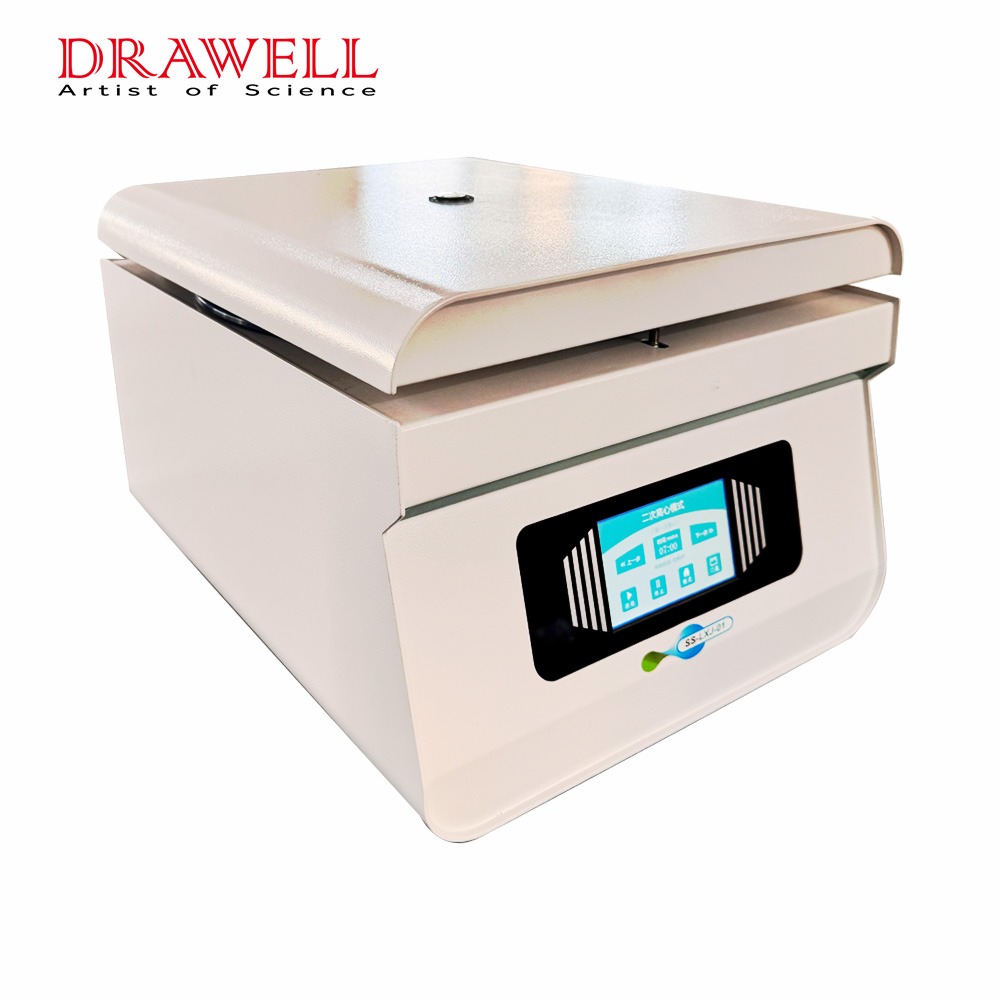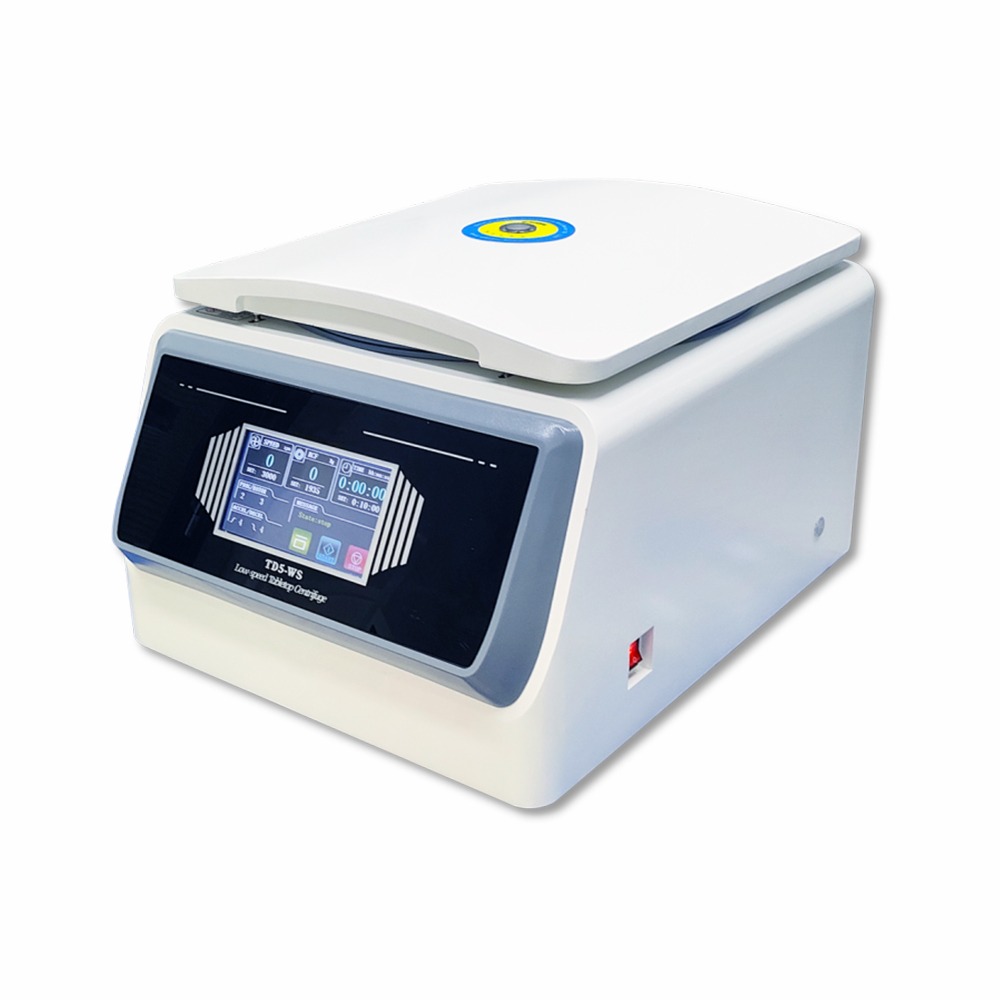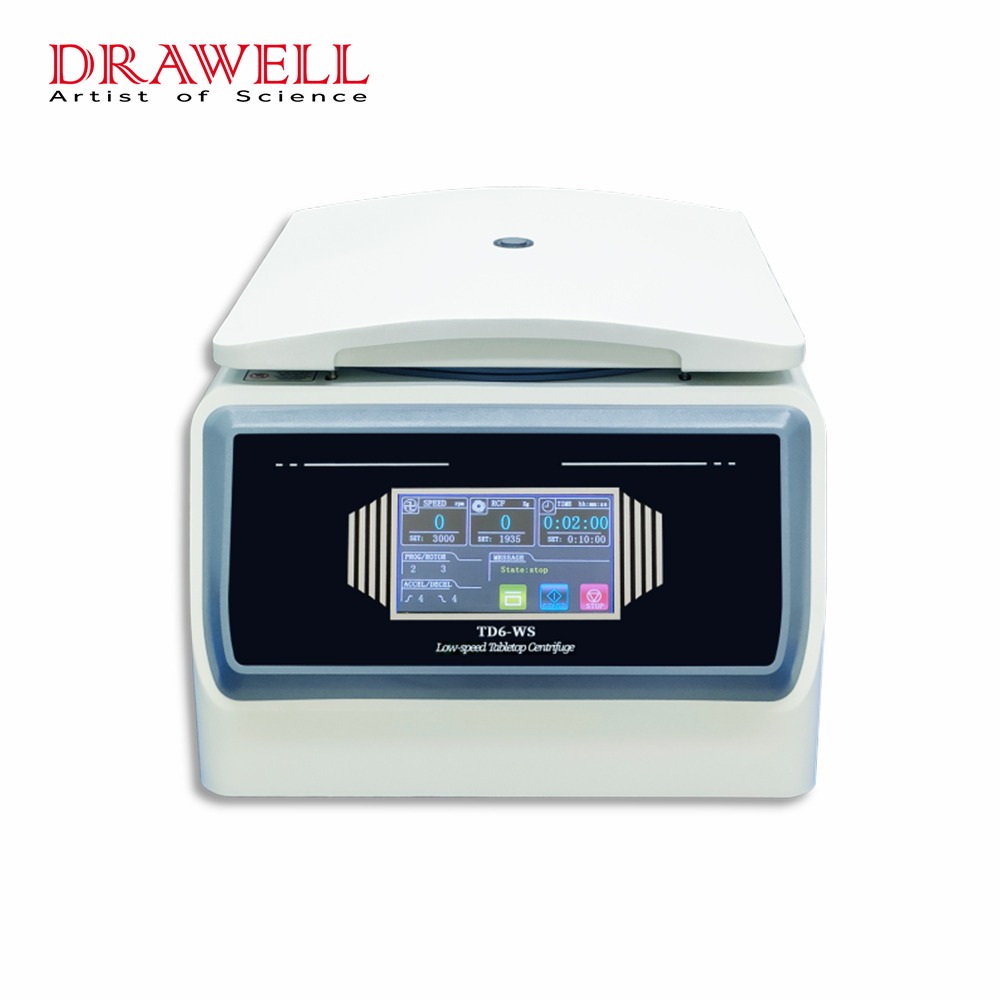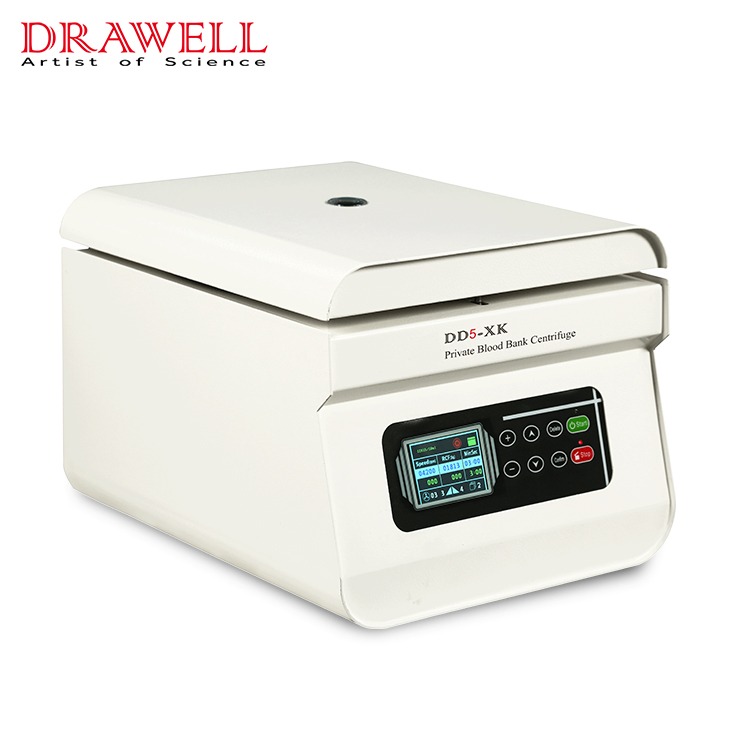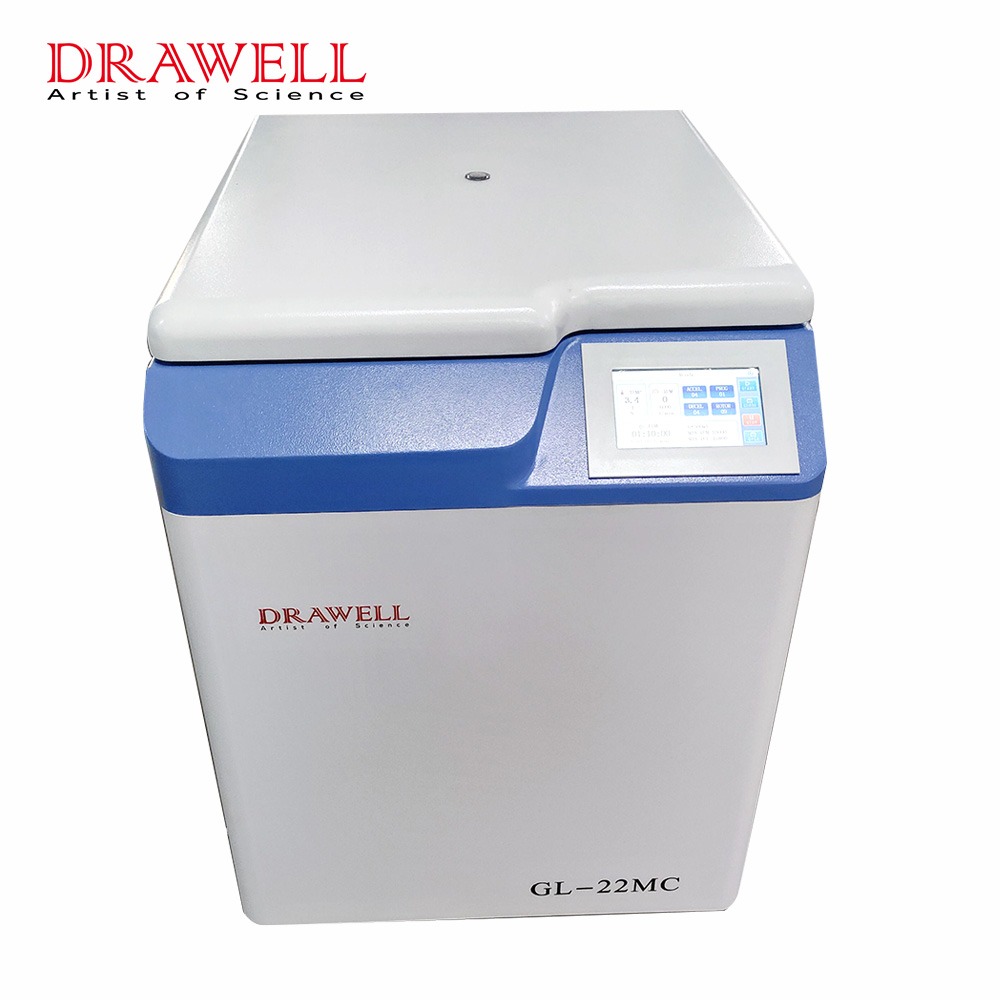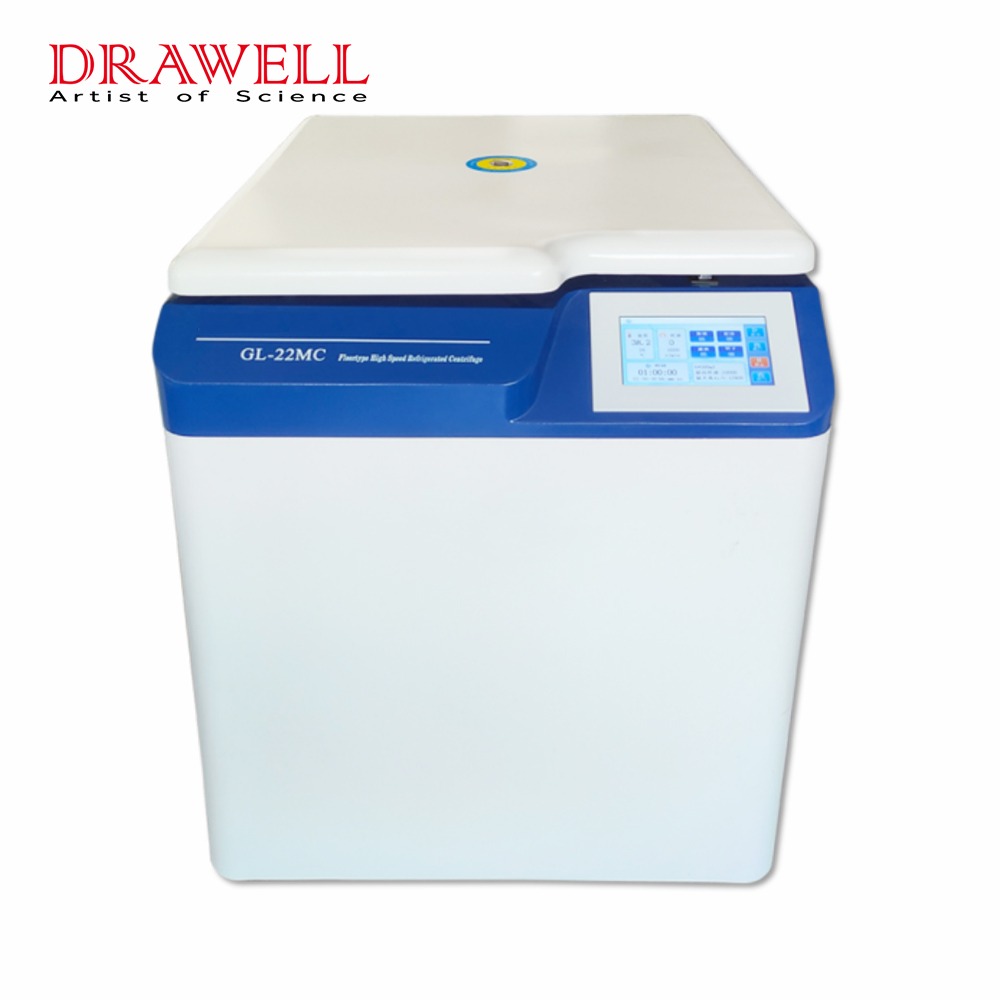If your refrigerated centrifuge is not cooling, this article will help you very well. I will tell you why your refrigerated centrifuge is cold and what to do about it.
Reasons and Solutions for Refrigerated Centrifuges not Cooling
What are the important functions of the refrigeration temperature control system of the refrigeration centrifuge? Most customers don’t know much about this. Here, let’s briefly introduce the function of the refrigeration temperature control system of the refrigeration centrifuge.
When the refrigerated centrifuge runs at high speed, the friction between the rotor body and the air may cause the body temperature to be difficult to control, and excessive temperature will also affect the service life of the internal components of the refrigerated centrifuge.
This is the difference between a refrigerated centrifuge and an ordinary refrigerated centrifuge. The refrigerated centrifuge uses a refrigeration system that can control the temperature to protect the machine components. The ordinary refrigerated centrifuge does not have a refrigeration system. The refrigerated centrifuge is equipped with a refrigeration system, which generally includes a compressor, a radiator, and a control circuit.
When the temperature in the refrigerated centrifuge cavity is higher than the set temperature, the control circuit turns on the compressor for cooling, the radiator dissipates heat, and the temperature in the cavity decreases until it is lower than the set temperature, and the control circuit turns off the compressor radiator.
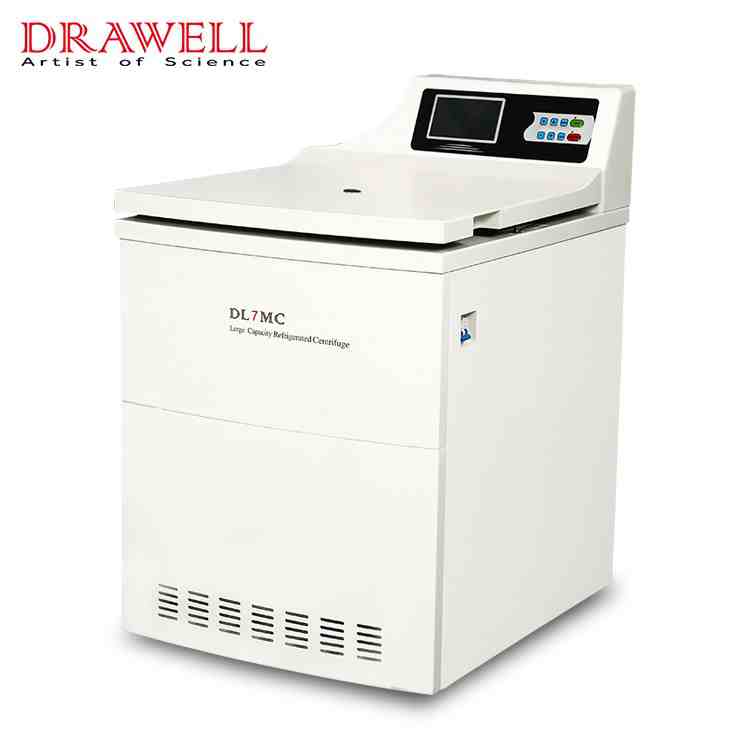
According to the experimental requirements of most users, the refrigerated centrifuge must be equipped with a low-temperature control system. For example, the separation of some organic active substances: enzymes, organic volatile substances, etc. requires constant temperature or the temperature difference does not exceed plus or minus 10°C. To ensure that the experimental conditions meet the needs of the experimental design, to ensure the smooth progress of the experiment.
Generally, there are several reasons why the refrigerated centrifuge does not cool:
Reason 1: The temperature in the refrigerated centrifuge cavity is too high, resulting in fluorine leakage in the refrigeration system, that is, there is no refrigerant and the compressor does not refrigerate.
Solution: Find the manufacturer’s repair personnel, re-weld the copper pipe, and refill the refrigerant after taking time out.
Reason 2: The refrigerated centrifuge has been used for a long time, and it may be that there is a leak in the copper tube or evaporator, and adding fluoride alone will not help.
Solution: It is difficult to repair, and it is necessary to find the leak point for repair, but it will not take a long time, and generally needs to be replaced.
Reason 3: Frosting inside the evaporator. The main reason is that the refrigerated centrifuge has only one evaporator. When the frost on the evaporator cannot be melted, the air duct is blocked, and the cooling capacity cannot go out, resulting in the refrigerator not cooling.
Solution: Check the defrosting system, it may be that the defrosting timer is faulty, or the heat pipe has been blown.
Reason 4: There is a problem with the compressor of the refrigerated centrifuge. If the pressure of the return air pipe of the compressor is too low, the compressor cannot be started, which will cause the refrigerated centrifuge to not cool.
Solution: Check whether the power plug of the refrigerated centrifuge is plugged in, or the power supply is insufficient.
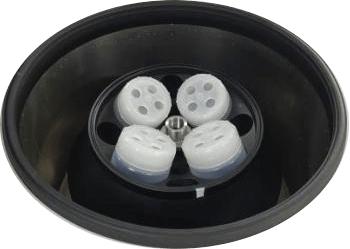
The Correct Operation Method of Refrigerated Centrifuge
Operation process of high-speed refrigerated centrifuge
1. After setting the operating temperature (usually 4°C), put the rotor into the centrifuge chamber first, and pay attention to the axis of the rotor; close the door, and the temperature of the centrifuge chamber will begin to drop, and the pre-cooling time should be sufficient.
2. Put the sample into an appropriate centrifuge tube, balance the weight with a balance, cover the cap of the centrifuge tube and tighten it.
- Note that the centrifuge tube is only 70% full. Although it has a cover, it may leak due to too strong centrifugal force.
- Most of the centrifuge tubes have lids attached, and the lids of the centrifuge tubes should also be balanced together.
- Centrifuge tubes are usually placed on crushed ice. When taking out the balance, wipe off the liquid from the crushed ice.
- The single centrifuge tube should be balanced with another centrifuge tube filled with clean water.
3. Put the well-balanced centrifuge tubes into the rotor symmetrically, cover the rotor cover, and pay attention to whether it is tightened or not.
- If the cover of the rotor is not tightened tightly, it will fall out during centrifugation, causing great damage!
4. Close the door of the centrifuge, and adjust the desired speed and time on the instrument panel, for example, 10000rpm, 30 minutes;
- Note that the speed used must not exceed the limit of the rotor. The maximum speed is usually written on the rotor. For example, the maximum speed of 3H24RI is 24000 rpm, but if the centrifuge is too old, it must be lowered.
- Try not to set the speed and time too high.
5. After confirming that all the steps are correct, press the start button to start, the centrifuge will gradually accelerate, and it should be closely monitored at this time.
- It is most dangerous when you start to accelerate. If you find that the sound is wrong or there is a big vibration, please press stop immediately.
6. Wait until the centrifuge reaches the desired speed, and then leave after confirming that everything is normal.
7. When the centrifugation is completed, the hatch can only be opened after the rotor* is stationary; please take out the centrifuge tube as soon as possible, first observe whether the centrifuge tube is *, and the position of the sediment, pour out the supernatant as soon as possible and be careful not too turbid the sediment.
- No matter what you want supernatant or sediment, please use a clean beaker to collect the supernatant to avoid mistakes.
- Be very careful when pouring out the supernatant, so as not to pour out the sediment together; if you accidentally mix it up, you have to do it all over again.
- If the centrifuge tube leaks, find out the reason and clean the rotor or centrifuge chamber immediately.
8. In the gap between two centrifuges, it is not necessary to take out the rotor, but cover the hatch to prevent hot air from flowing into the centrifuge cabin.
9. After all the rotors are used, take out the rotor and clean it. You can rinse it with tap water and put it upside down to dry. The centrifuge hatch should be opened, and then wipe and clean up after the ice melts. If any liquid leaks out, wash it with clean water. Also, go back and check the balance and tabletop for balancing the centrifuge tubes, which are easy to get dirty and should be cleaned carefully before leaving.


